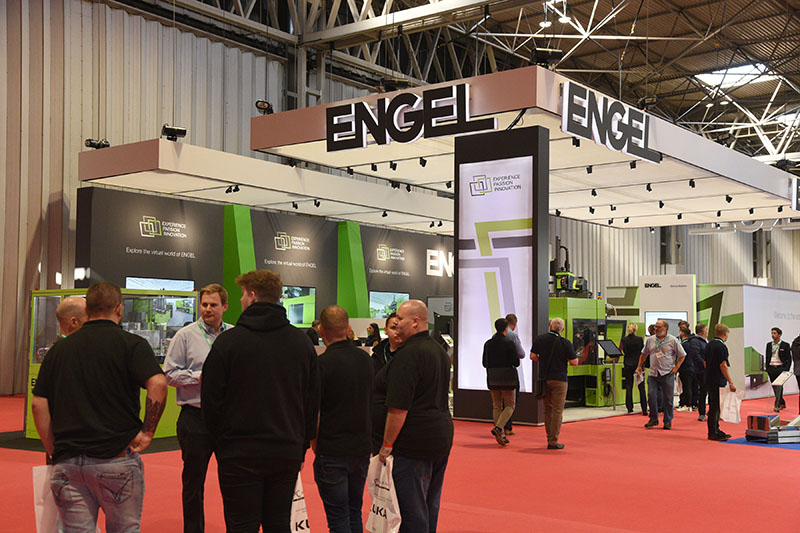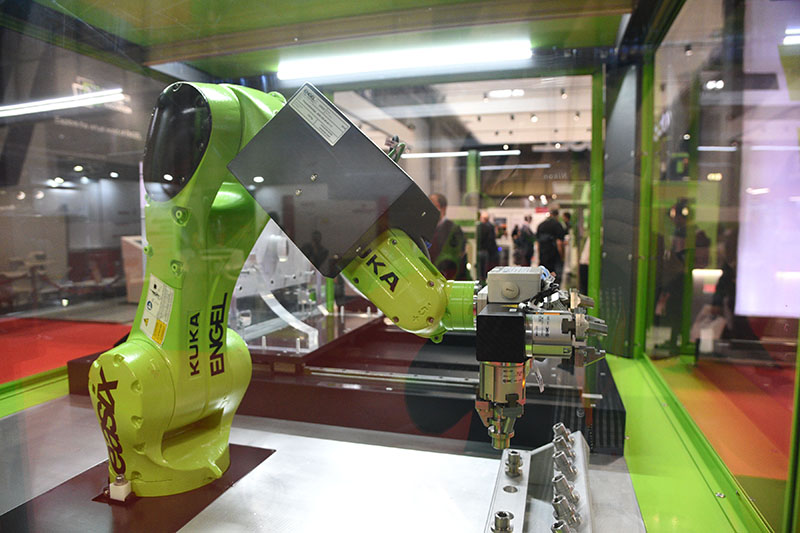Interplas 2023 returns to the NEC, Birmingham from September 26-28. David Gray, head of content at Rapid News Group, recently answered Packaging Scotland’s questions about the event, which this year is preparing to celebrate three quarters of a century of connecting the UK plastics industry.
Q) What is the history of Interplas and how has the event evolved over the years?
A) We’ve done quite a bit of digging into this recently, as we approach this special 75th anniversary edition of the show. It turns out that Interplas started life as a plastics section at the British Industries Fair at Earls Court in May 1948. At that time, plastic was still emerging as the material of the future, and its many configurations and applications were yet to be discovered.
The British Plastics Federation, encouraged by the response to the presence of a plastics area at the BIF, launched what was then called the British Plastics Exhibition with Iliffe and Sons at the Olympia in 1951.
By 1957, it had become a biennial fixture, and the name was changed to the International British Plastics Exhibition, and ran for ten days. It had a few iterations, but the first reference to Interplas occurred in 1961.
In 1977 Interplas moved to the newly opened National Exhibition Centre, which has been its home ever since. It’s the ideal location, not just for its international links, but of course, the Midlands is a hotbed of innovation for plastic processing.
It was, apparently, also the first UK trade show to use computers for visitor registration, back in 1981 – so never let it be said it’s an old-fashioned industry!
In 2011, Rapid News Group acquired Interplas under licence from its previous organiser Reed Exhibitions, completing the acquisition in 2014. From there, it’s been a story of growth and re-growth, with the show going from strength to strength in each subsequent edition.
Q) Why should people visit Interplas 2023?
A) For a start, the last edition, while successful, took place in the middle of the pandemic, with OEMs and brand owners facing supply chain challenges. Not to mention the fact that travelling and attending networking events wasn’t as simple as it normally would be. So this is the first time since the pandemic that the UK industry will have an opportunity to get together and collaborate on such a large scale, and connect with over 500 companies under one roof!
And as mentioned previously, this is a special year. We’re celebrating the 75th anniversary of the show with a special celebration of the 75 most influential individuals in the plastics space. We’ve put this one to the industry in a survey, and the response has been phenomenal. Our nominees represent the journey the material has been on since its inception, and we’re looking forward to honouring them.
Q) Any new features being added to the event this year?
A) While we’ve always run Interplas with a conference, this year we’re launching the Interplas Insights conference stage, with a new purpose-built theatre, and an interactive new format. Industry experts will take to the stage to discuss, rather than present, the sector’s key challenges and opportunities with our visitors.
We’ve also grown our Knowledge Pavilion, which is the destination for anyone looking to work and collaborate across the industry. With our new knowledge partners on board (consisting of trade associations and R&D groups) visitors should easily be able to find the information they need for their projects.
And, as I mentioned earlier, we’ll be celebrating the show’s 75th anniversary with a special tribute to the 75 most influential individuals – as voted for by the industry.
Finally, we’ve opened a dedicated Recycling Zone, in response to the introduction of the Plastic Packaging Tax.
Q) What can you tell us about the conference line-up?
A) For a start, I’m confident it’s our strongest line-up to date. As I said, the format has changed for this year, so sessions will be divided into different themes, including: ‘Designing in Plastics: Materials of the Future’, ‘The Future of UK Plastics’, ‘A Road to Net Zero and A Circular Economy ’, ‘Digitalisation for Sustainable Manufacturing’, ‘Diversity in Plastics’ and ‘Research and Development in Plastics’.
Each day will feature interactive panel sessions, in which the industry’s leading minds will have the chance to discuss and debate topics like energy costs for moulders, the plastics tax, reshoring, chemical recycling and more.
Some key highlights include Jaguar Land Rover’s reliance on industry 4.0 tech in its plastic operations, Tesco’s collaboration with the plastics industry to increase the amount of food grade recyclate available in the UK, and a panel discussion between some of Britain’s leading trade moulders on the recent uptick in reshoring – and where that might be taking us.
Q) What do you expect some of the key themes to be this year?
A) We expect recycling to feature more heavily this year, as a result of the Plastic Packaging Tax coming into force last April. So I wouldn’t be at all surprised if we saw more moulders and converters looking to find ways to monetise their scrap, as well as brand owners on-site looking for ways to incorporate more recyclate into their packaging.
It’s always been a showcase of the best of British manufacturing, and I think the appetite for that is really strong at the moment. People struggled to keep supply chains open during the pandemic, and that was largely due to the amount of production that was offshored over the past decades. Now the industry is making the most of the opportunity to demonstrate that converting and toolmaking can be done domestically, at a competitive price and to a world-class standard – without the risk of interruption.
Q) Have you been encouraged by the way the industry has adapted to changing legislation like the Plastic Packaging Tax?
A) Yes and no. I know the industry wants badly to avoid having to pay the tax, or pass any costs along to brand owners. But the fact remains, the economy for recyclate is not yet up and running in this country (or others) in order to meet the demand. And actually, it’s not even that there’s not enough recyclate to go round. It seems to be, having spoken to many converters about this, that the regulation around the useability of recyclate is so prohibitive, that while there is plenty around, it just isn’t fit for purpose under current rules.
This is really evidenced by the fact that HMRC recently announced it has exceeded its first year target in collection on the PPT – taking in a whopping £235 million. That really shows you that in the first year, whether by choice or by necessity, large parts of the industry are just paying the tax.
Q) How would you describe the level of innovation within the sector at the moment? Any examples of innovative products you’re excited to see at Interplas?
A) On the materials side, the potential applications for plastic never seem to end. From medical to space exploration, the materials compounders are forever finding new ways to solve humanity’s greatest challenges. It’s one of the things that frustrates me about the anti-plastic rhetoric – no other material has so many game-changing properties, and yet it continues to be popular to say that ‘plastic is evil’.
In machinery, you’ll see all of the major European and global machinery brands running live application demos on their stands – as usual, most of them remain tight lipped, but if you take a look at the big launches from K Show last year in Germany, you’ll get an indication of some of the machines set to make their UK debut at the NEC in September.

















